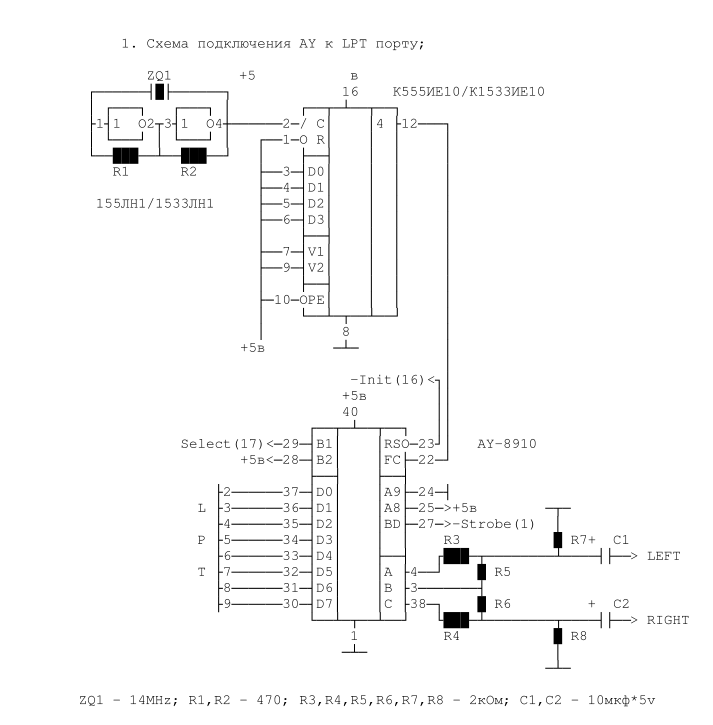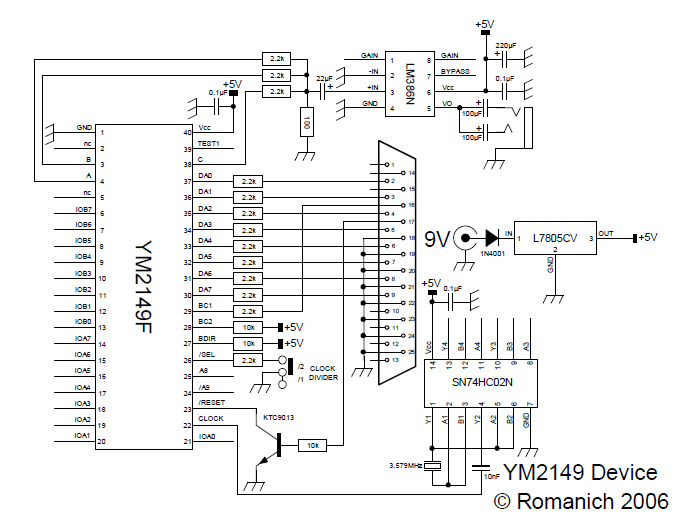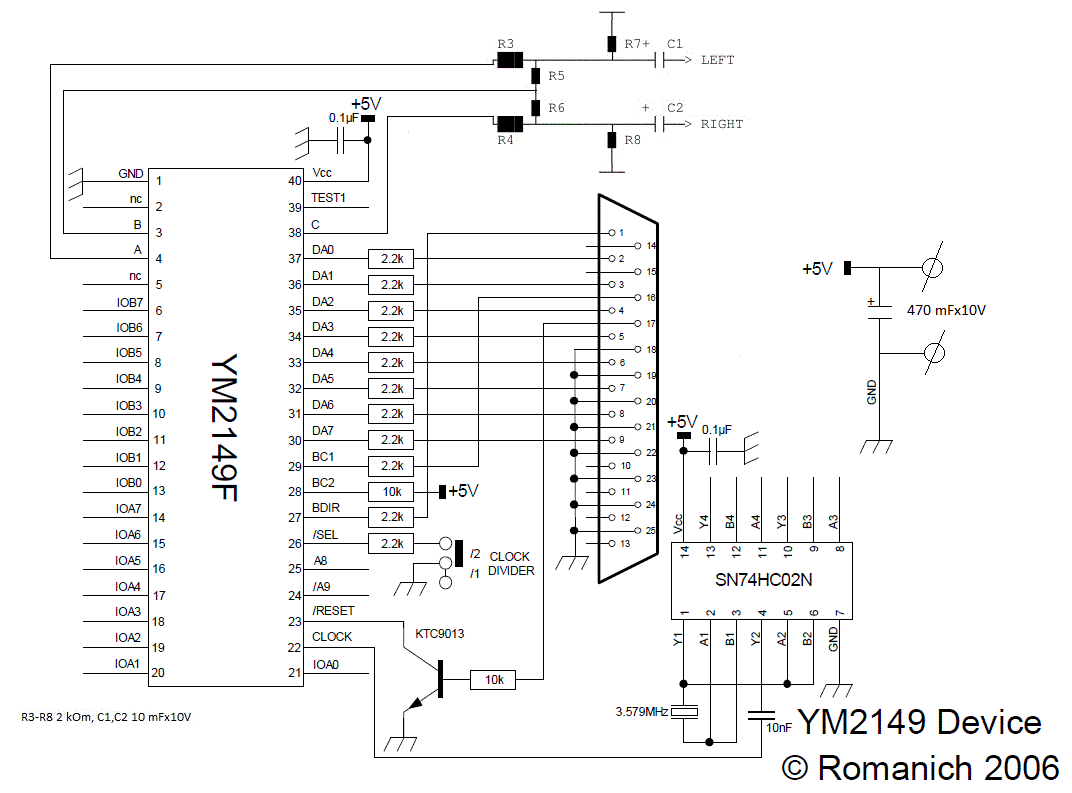The sound on the chip AY-3-8910 (or Yamaha YM2149F) comes from the ZX Spectrum on the PC via LPT-port
 I didn’t have a Spectrum in my childhood, so I didn’t know much about its musical capabilities with an additional musical “coprocessor”, as the Yamaha AY-3-8910 three-channel oscillator chip is sometimes called.
I didn’t have a Spectrum in my childhood, so I didn’t know much about its musical capabilities with an additional musical “coprocessor”, as the Yamaha AY-3-8910 three-channel oscillator chip is sometimes called.Relatively recently, I had a Spectrum-compatible computer, but it was a Spectrum-48 clone, without a music chip. Well, so much the better, I thought, there is room for creativity - you can increase memory, you can fasten the drive, and of course an important improvement is to put a music chip. A couple of YM2149F chips were ordered from China:

Why they, I do not remember now, maybe they are cheaper than AY-3-8910, maybe they were just available at that moment. In general, this is an analogue of AY-3-8910, it does not differ in pinout, it differs in the width of the envelope, and because of this, the sounds sound a little differently (the timbre of the sound). I thought it was not so important to me. Will play - and that joy. Why ordered a pair? Well, one in the Spectrum, and one in reserve, in case of marriage at the first, or my hands curves when connected. And so they arrived, and while I was thinking about the layout of the board for the Spectrum, I wanted to somehow check the chips. And then I came across old projects of connecting these chips to the LPT port of a computer.
Demo
')
You can listen to the sound of the finished device here: soundcloud.com/tronix286 . There are also “experimental” recordings made during the debugging of the device, and therefore the quality of such recordings is not impressive. But a general idea of the "sound" should give.
Iron
Here are some of the diagrams connecting AY-3-8910 to the LPT port of a computer, which can be found on the Internet:
LPT AY by Vitaly Mayatskih & Alexander Kulik [Wolf ^ eTc / Scene]

A simple circuit, I liked the stereo channel mixer in it and did not like the clock generator on two chips. There is another option:
ZX Spectrum Computer Sound Chip Emulator ( LPT-YM.7z )

Here I liked the simple frequency generator, but did not like the mono amplifier and the stabilizer with 9 volts. In the end, I decided to take the mixer from the first circuit, the clock frequency generator from the second. I decided to power the circuit from + 5V via USB, thus I refused the nine volt stabilizer. In a number of experiments, it turned out that for complete happiness it is necessary to still control the BDIR control signal, therefore this signal appeared on the circuit, which was triggered on the first pin LPT (Strobe). The Strobe signal in LPT is inverted, and for good it would be necessary to put a transistor, such as a RESET signal, for reverse inversion, but you can just remember that if the helmet is 1, then BDIR = 0 and if the helmet is 0, then BDIR = 1. As a result, the final scheme took the following form:

Assembled device:

Soft
As for software support, that is a great player ZXTune by Vitamin ( caliper thread ). The author has kindly included support for this device in his player, so it became possible to play music formats not only from the ZX Spectrum, but also from other computers, for example, with the Atari ST or Amstrad CPC. The program works on Win XP, Win 7 x32 and Win 7 x64 (with support for an LPT device), but in general it is cross-platform and is also available for mobile platforms.
The largest collection of Modland chip-tyuns is available at http://www.exotica.org.uk/wiki/Special:Modland There are about 80GB of modules of all kinds and genres. Specifically, the ZX has a separate website: zxtunes.com In general, do not listen to listen.
Source: https://habr.com/ru/post/218763/
All Articles